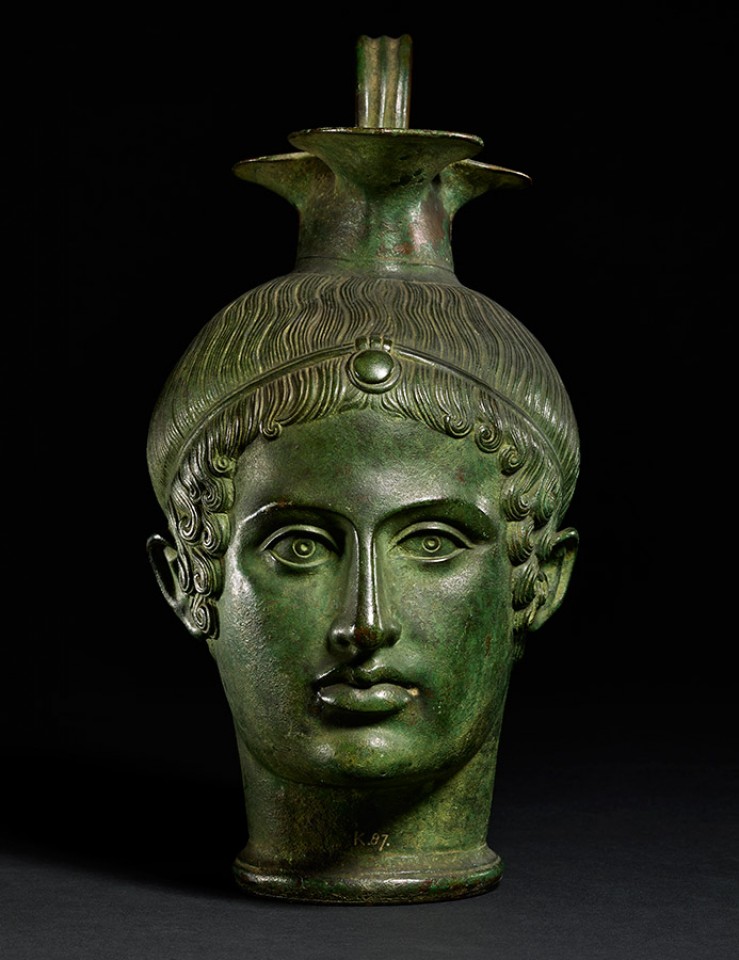Etruscan Oenochoé in the shape of a young man's head 5th-4th C. BCE
"Then what diviner, in turning the records and tomes of the augurs,
Failed to relate the mournful forecasts the Etruscans had written?
Seers all advised to beware the monstrous destruction and slaughter,
Plotted by Romans who traced their descent from a noble ancestry;
Or they proclaimed the law's overthrow with voices insistent,
Bidding rescue the city from flames, and the deities' temples;
Fearful they bade us become of horrible chaos and carnage;
These, by a rigorous Fate, would be certainly fixed and determined,
Were not a sacred statue of Jove, one comely of figure,
High on a column erected beforehand, with eyes to the eastward;
Then would the people and venerable senate be able to fathom
Hidden designs, when that statue — its face to the sun at its rising —
Should behold from its station the seats of the people and Senate.
Long was the statue delayed and much was it hindered in making.
Finally, you being consul, it stood in its lofty position.
Just at the moment of time, which the Gods had set and predicted,
When on column exalted the sceptre of Jove was illumined,
Did Allobrogian voices proclaim to Senate and people
What destruction by dagger and torch was prepared for our country."
-Cicero, On Divination: Book 1.12
Source:
http://seduzioneetrusca.cortonamaec.org/it/3-seduzione-etrusca
http://cartelfr.louvre.fr/cartelfr/visite?srv=car_not_frame&idNotice=28083&langue=fr
Quote:
https://penelope.uchicago.edu/Thayer/E/Roman/Texts/Cicero/de_Divinatione/1*.html#R12





Comments
Post a Comment